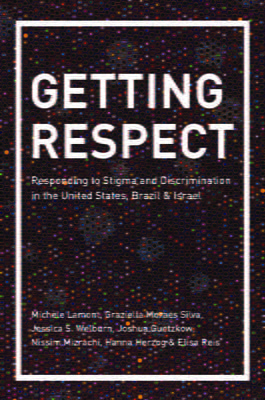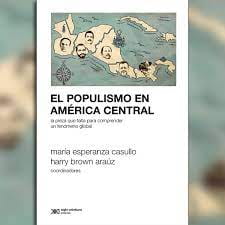A Review of Getting Respect
Responding to Stigma and Discrimination in the United States, Brazil and Israel
Black Lives Matter in Brazil Too

Getting Respect: Responding to Stigma and Discrimination in the United States, Brazil and Israel by Michéle Lamont, Graziella Moraes Silva, Jessica S. Wellburn, Nissim Mizrachi, Hanna Herzog and Elisa Reis. 2016. Princeton University Press.
When I first arrived in Brazil in the 1980s, I quickly learned that race in Brazil was not important there. The country that once had by far the largest slave population in the Americas—several times more than the United States—was considered a “racial democracy.” It was an exceptional country where race mattered little or not at all, especially when compared to the United States. To prove it, a Brazilian colleague pointed me to its extensive race mixture, which he claimed I could observe in everyday interactions at nearby bars, and by the presence of a large mixed race population, presumably revealing much racial intermarriage. For analysts of Brazilian society at the time, class determined one’s status in life. Since little social mobility existed in Brazil, they claimed that blacks remained poor because their recent ancestors were poor slaves.
Indeed, in 1949, UNESCO commissioned a study of Brazil’s exemplary model of race relations, seen then as an antidote to segregation in the United States, apartheid in South Africa and especially the horrors of genocide in Nazi Germany. Much to UNESCO’s s surprise, some Brazilian scholars, including Florestan Fernandes, showed that racial prejudice was alive and well in Brazilian society. However, he also concluded that racial prejudice was transitory as class was the deep underlying structure that gave it life. Unfortunately, that influential scholar moved on from his studies of race. For several decades until the end of the millennium, Brazilians would continue to defend their racial democracy, although a couple of social scientists had challenged its central tenets with hard data, and a small black movement denounced racial democracy as nothing more than a fig leaf covering a deep-seated and pernicious racism.
Since then, I have witnessed a profound change in the status of race in Brazil. There is now a consensus that racism is prevalent, talk about race and racism is no longer silenced, and affirmative action is now mandated at all federal universities. Social science facts have shown us that racial democracy is indefensible, except perhaps as a goal. We have learned that race matters quite a bit. For example, we know that the average income of blacks and mixed-race Brazilians is roughly half of white income. Moreover, we now know that there has been much social mobility in Brazil since at least the 1960s, but whites have improved their status much more than nonwhites over the course of the 20th century. Much of Brazil’s upper-middle class, which is virtually all white, is only two or three generations away from poor immigrant ancestors.
On the other hand, Brazil’s steep racial inequality coexists with porous social boundaries. Social interactions between whites and blacks, measured as interracial marriage, friendships and residential integration, are greater than in the United States. That had been the (limited) evidence for racial democracy. Yet greater is still far from the level at which race does not matter. At the same time, the United States is no longer extremely segregated as it once was, and indexes of average social interaction suggest that it is becoming more like Brazil (although racial inequality remains well below Brazil’s), making the comparison a slowly moving target. Despite some differences, race and racism continue to bedevil social relations in both countries.
Michelle Lamont and her collaborators go beyond the historical and survey-based analyses, which have characterized most Brazil-United States comparisons, to examine the personal experiences of racialized minorities in confronting racism. We get to hear what Brazilians themselves have to say about race. Certainly, there have been interview-based studies of race in Brazil and the United States, but this book’s comparative and systematic focus and a superb theoretical framing about how minorities experience racial exclusion make its contributions noteworthy. Some issues are completely new, such as how ordinary people understand and react to incidents of racial exclusion.
In particular, Lamont and fellow authors interview 150 African Brazilians in Rio de Janeiro, 160 African Americans in the New York area, and 137 members of three racialized groups in Israel about incidents of stigma (being assigned low status/”assault on worth”) and discrimination (being deprived of resources) that they experienced. While discrimination has been much discussed in American sociology, we know much less about stigmatization in regards to race, even though both contribute to the process of racial inequality everywhere. The authors contend that North American analysts of race probably focus on discrimination because it denies the important American right of equal opportunity. At the same time, they often neglect stigmatization, which is generally protected by the First Amendment, although it is condemned in Brazilian and other legal traditions.
The importance of class thinking in producing racial inequality is prominent in the accounts of the Brazilian respondents. The common association between blackness and low status, the strong affirmation of equality and universalism and the strong rejection of cultural differences between Brazilians of different color leads to the common sense that incidents of discrimination, unless blatantly racist, are not due to race alone. Middle-class Brazilians tend to be more certain than working-class Brazilians that they have experienced racial discrimination or stigmatization, yet they sometimes employed class explanations in their accounts, as in assuming they were mistaken for poor people.
Stigmatization is particularly common in Brazil. Middle-class African Brazilians, who are frequently the only ones in white spaces, often suffer from being stereotyped. Black women are frequently confused with maids, nannies and even prostitutes while men are feared as physical threats and associated with criminals. Brazilian respondents also commonly reported receiving poor service, which they sometimes contrasted with the positive treatment received by well-to-do blacks in the United States. Finally, several African Brazilians reported experiencing racial jokes or being insulted on racial grounds much more often than in the United States, even though the latter is considered a serious crime in Brazil. They often employed narratives of race mixture as making them Brazilians more tolerant and humane.
The authors also examine how these persons confronted their stigmatizers. The responses often sought to avoid confirming racial stereotypes; sometimes they used humor or they simply chose to ignore the incidents. How they responded to their abusers as well as the incidents themselves were clearly shaped by their respective national ideologies, institutions and the acceptable cultural repertoires available to them. The book’s authors found confrontation to be most common in the United States, where there is a shared understanding of civil rights and a legal context that strongly discourages racist speech.
Silence was common in Brazil, where there is often an ambiguous understanding of calling out racial insults, even though the victim commonly understands the abuse and suffers nonetheless. That silence also reflects a hesitation to describe a situation as racial and is sometimes accompanied by a polite exchange to educate racists, which the authors call “peaceful confrontation.” Although they tended to be critical of the racial democracy idea and were proud of being black, African Brazilians would often downplay racism, using class and race mixture narratives.
To strengthen their comparative conclusions, the authors also examined three racialized groups in Israel: Mizrahi Jews, Ethiopian Jews and Arab Palestinians. The Israeli case adds more layers of complexity to understanding racial exclusion and gives further leverage to the book’s approach. The authors claim that Israel is often treated as an exception, something that was long touted for the Brazilian case. One could argue that the United States is the exception, but really all countries and cases are exceptions.
This book would have merits merely on the basis of the Brazil-United States comparison. Indeed, Lamont and the others, such as Brazilian co-authors Graziella Moraes Silva of the Graduate Institute Geneva and former head of the Sociology Department of the Federal University of Rio de Janeiro and the very distinguished scholar Elisa Reis of the Federal University of Rio and the Brazilian Academy of Sciences, advance our understanding of race in Brazil, not to mention race generally. Whereas race studies in Brazil have been marginalized in its academia in recent decades, the fact that such distinguished Brazilian scholars have led the Brazilian team of this important international project shows just how important race studies have become in the Brazilian social sciences.
Today, racial inequality remains high and is likely to grow in the current recession, and incidents of racial discrimination continue to be all too common. On the other hand, affirmative action policies may begin to diversify the middle class. Most Brazilians are now conscious of racism and race is becoming mainstream in Brazilian academia. Although race is likely to long remain a central feature in Brazil’s system of steep inequality, at least we have gone far in analyzing its causes and consequences. Brazil is clearly not a racial democracy, though that is a worthwhile goal.
Edward Telles is Distinguished Professor of Sociology at the University of California, Santa Barbara. He is the author of Race in Another America: The Significance of Skin Color in Braziland Pigmentocracies: Race, Ethnicity and Color in Latin America, which he recently co-authored with scholars from Brazil, Colombia, Mexico and Peru.
Related Articles
A Review of Aaron Copland in Latin America: Music and Cultural Politics
In Aaron Copland in Latin America: Music and Cultural Politics, Carol Hess provides a nuanced exploration of the Brooklyn-born composer and conductor Aaron Copland (1900–1990), who served as a cultural diplomat in Latin America during multiple tours.
A Review of El populismo en América Latina. La pieza que falta para comprender un fenómeno global
In 1946, during a campaign event in Argentina, then-candidate for president Juan Domingo Perón formulated a slogan, “Braden or Perón,” with which he could effectively discredit his opponents and position himself as a defender of national dignity against a foreign power.
A Review of Born in Blood and Fire
The fourth edition of Born in Blood and Fire is a concise yet comprehensive account of the intriguing history of Latin America and will be followed this year by a fifth edition.




